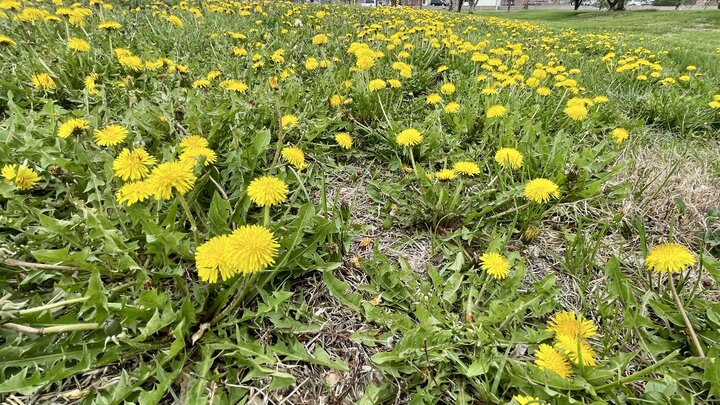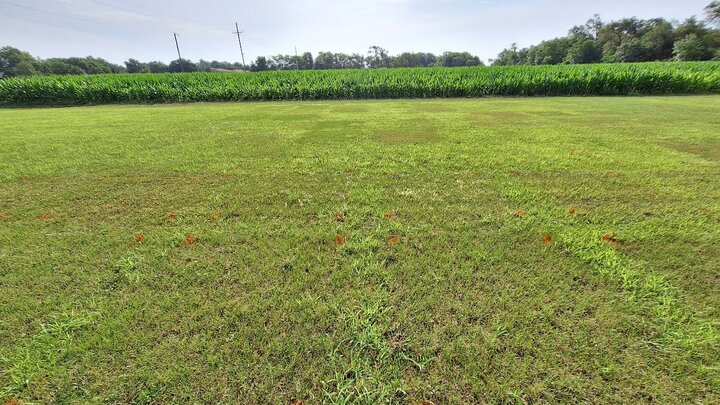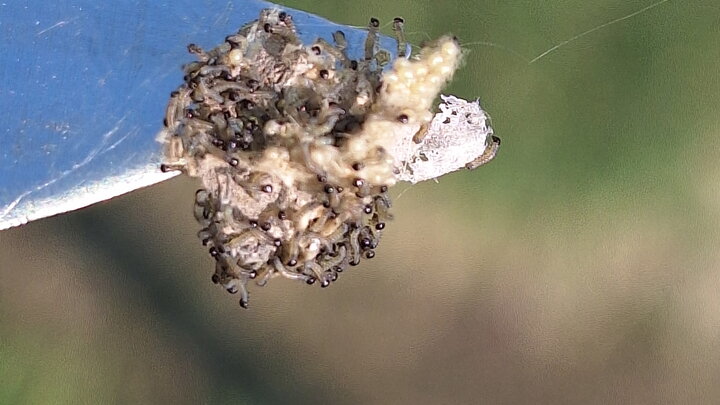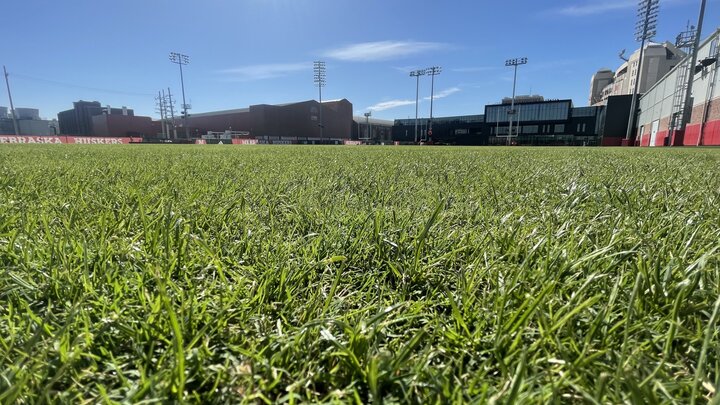Dandelions and other broadleaf weeds are starting to emerge and bloom throughout Nebraska. The following are tips on how to control dandelions and other perennial broadleaf weeds:
Mowing
The height of turfgrass needs to be maintained at 3-4 inches for most home lawns and other turfgrass, according to their usage, and provide practical, competitive turfgrass. Do not remove more than 1/3 of the leaf blade in a single mowing application.
Irrigation
Water the turfgrass roots deeply and infrequently. Irrigation should be applied in depth of rooting only after the grass shows signs of drought stress. Overall, keep the roots moist, not soggy or dry. Check for soil moisture with a screwdriver to determine if moisture is being retained in the soil or not.
Fertilization
According to our Cool Season Lawn Calendar for both Eastern (G2356) and Western Nebraska (G2359) NebGuides: fertilizing should start in late April to early May, depending on the age of the lawn. This is due to the growth rate of cool-season grasses lessening when warmer temperatures increase, and increased growth in early fall with conducive temperatures. Timing is also helpful to promote grass competition with weeds in addition to the high mowing height and infrequent irrigation usage.
Herbicides Timing
If you are applying herbicides for control of dandelions and other perennial broadleaf weeds, September and October are the preferred timing rather than in the spring to treat large areas and areas with widespread or excessive populations of perennial broadleaf weeds. There are several reasons:
- Fall treatments are more effective than spring applications since herbicides will translocate down to the root as the plant prepares for winter.
- Less risk of damage to non-target plants in the fall since many have died, gone dormant, or lost their leaves.
- Allow turfgrass to fill in voids left by dying weeds over the late fall to early spring, and help minimize future weed pressure.
What about spring herbicide application?
If applications are made in spring at temperatures less than 70°F, choose ester formulations over amine formulations to improve penetration and control, and apply before the peak bloom of dandelion. Use caution with ester formulations made near desirable ornamentals, and read the product label thoroughly for guidance to avoid damage.
Herbicide Formulation Considerations
Apply liquid herbicides to dry leaves of the weeds to maximize absorption. Apply granular herbicide and fertilizer formulations onto wet leaves of weeds to allow the granules to stick to the leaves and help maximize absorption.
Regardless of the season or type of application, apply when no rain is in the forecast, so the products stay on the leaves of the weed. Always avoid applications to impervious surfaces. Please sweep or blow granular product particles off these surfaces back into the turfgrass.
Sources and More Information:
Cool Season Lawn Calendar for Eastern Nebraska (G2356): https://turf.unl.edu/sites/unl.edu.ianr.agronomy-horticulture.turf/files/media/file/Eastern-NE-TurfCoolSeasonLawnCalendar-7-7-23.pdf
Cool Season Lawn Calendar for Western Nebraska (G2359): https://turf.unl.edu/sites/unl.edu.ianr.agronomy-horticulture.turf/files/media/file/WesternNE-TurfCoolSeasonLawnCalendar-7-7-23.pdf
Lawn Care Pro Series: Broadleaf Weed Control (2012): https://turf.unl.edu/sites/unl.edu.ianr.agronomy-horticulture.turf/files/media/file/broadleaf-weed-control2012a.pdf
Turfgrass Weed Control for Professionals (2024)
- PDF only: https://edustore.purdue.edu/turf-100-w.html
- Book only: https://edustore.purdue.edu/turf-100.html
Article Reviewed by John Fech
Originally published as “Twelve ways to maximize control of dandelions and/or perennial broadleaf weeds” on April 24, 2014, by Zac Reicher.




